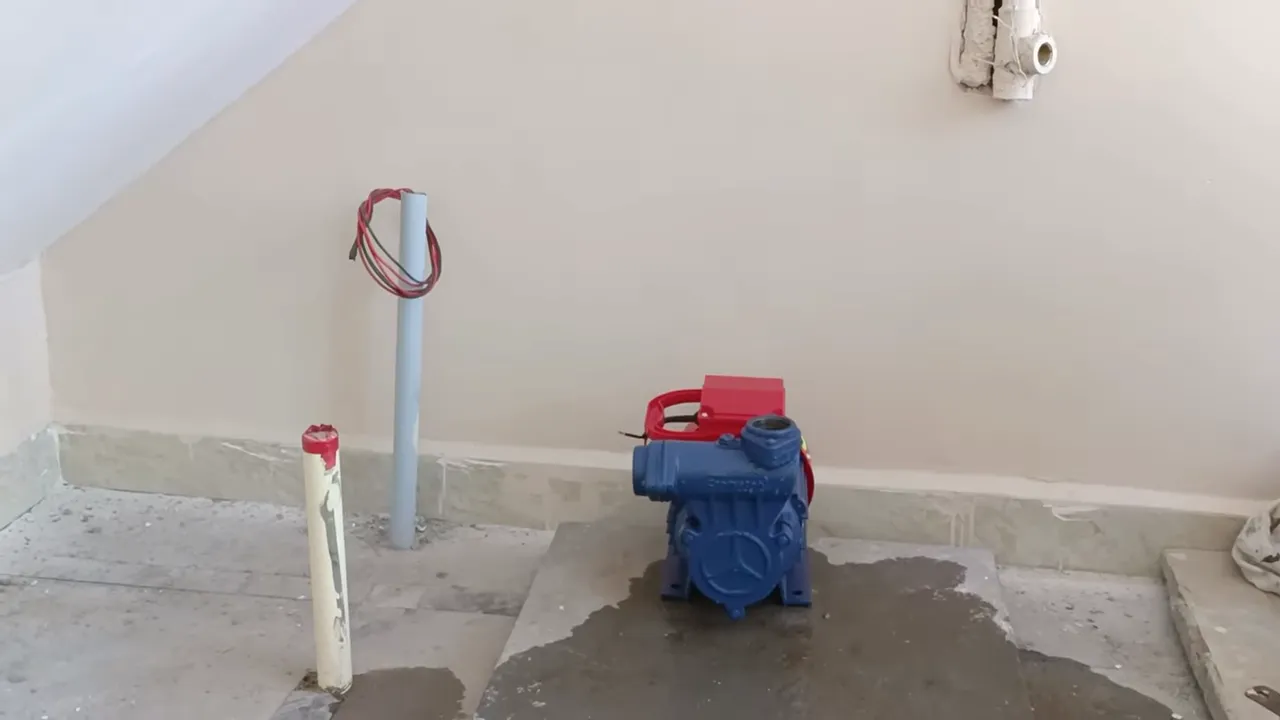To install a water pump in a house, locate the main water supply valve and turn it off, then disconnect the old pump and remove it.
Choosing The Right Water Pump
When it comes to installing a water pump in your house, choosing the right one is crucial. A water pump plays a vital role in ensuring a steady supply of water for your everyday needs. Whether it’s for your home, garden, or irrigation system, selecting the right water pump will ensure efficient water flow and optimal performance. In this section, we will discuss the factors to consider when selecting a water pump, the importance of assessing water needs, and the different types of water pumps available.
Factors to consider when selecting a water pump
Before purchasing a water pump, there are certain factors you need to consider to make an informed decision. Let’s take a look at some of these crucial factors:
- Flow rate: The flow rate of a water pump refers to the amount of water it can deliver per unit of time, usually measured in gallons per minute (GPM). It is important to assess the required flow rate based on your water needs to ensure sufficient supply.
- Head pressure: Head pressure is the resistance the water pump needs to overcome to deliver water to a certain height or distance. It is determined by factors such as elevation, piping system, and friction loss. Assessing the head pressure is essential to ensure the pump can deliver water with enough force for your specific needs.
- Power source: Consider whether the water pump will run on electricity, gas, or be powered by a diesel engine. Each power source has its own advantages and limitations, so choose one that suits your requirements.
- Durability and reliability: Look for a water pump that is built to last and can withstand the demands of continuous operation. A reliable pump will minimize downtime and costly repairs.
- Budget: Set a realistic budget for your water pump purchase. While it’s important to invest in a high-quality pump, make sure it aligns with your budget to avoid overspending.
- Noise level: Consider the noise level of the water pump, especially if it will be installed in a residential area. Opt for a pump that operates quietly to avoid disturbances.
The importance of assessing water needs
Assessing your water needs is crucial before choosing a water pump. Knowing how much water you require and for what purposes will help determine the appropriate pump specifications. Consider factors such as the number of faucets, showers, toilets, and appliances that will be using water simultaneously. Additionally, evaluate any irrigation or outdoor water usage requirements you might have. Accurately assessing water needs will ensure you select a pump that can handle the demand and maintain a consistent water supply.
Understanding the different types of water pumps available
There are various types of water pumps available, each designed for specific applications and water sources. Let’s explore some common types:
| Type of Water Pump | Description |
|---|---|
| Centrifugal pump | A centrifugal pump is commonly used for domestic and agricultural purposes, providing high flow rates with low to medium pressures. |
| Submersible pump | A submersible pump is ideal for pumping water from wells or underground sources. It is submerged in the water and offers excellent efficiency. |
| Jet pump | A jet pump is suitable for shallow wells and can also be used for boosting water pressure in residential buildings. |
| Solar-powered pump | A solar-powered pump is an eco-friendly option that utilizes solar energy to pump water. It is suitable for remote locations with ample sunlight. |
Understanding the different types of water pumps will help you choose one that best suits your specific needs and water source.
In conclusion, choosing the right water pump for your house requires careful consideration of factors such as flow rate, head pressure, power source, durability, budget, and noise level. Assessing your water needs and understanding the various types of water pumps available will ensure you make an informed decision. By selecting the right water pump, you can enjoy a consistent and reliable water supply for all your household needs.
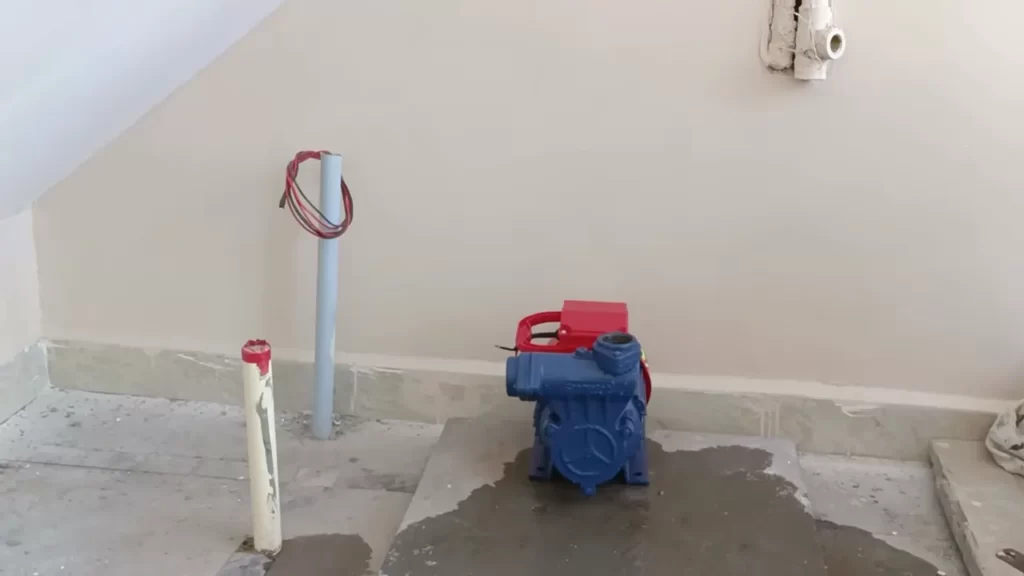
Gathering The Necessary Tools And Materials
Before beginning the installation process of a water pump in your house, it is essential to gather all the necessary tools and materials. This will help ensure a smooth and successful installation, saving you time and effort in the long run. In this section, we will discuss the essential tools, basic plumbing tools, materials needed, and safety equipment required for a successful installation.
Essential tools for the installation process
When it comes to installing a water pump in your house, the following tools are vital:
- A pipe wrench: This tool is crucial for tightening and loosening the pipe fittings.
- An adjustable wrench: It is used to tighten or loosen various nuts and bolts.
- A screwdriver set: This includes different screwdriver types that will be required during the installation process.
- A utility knife: Useful for cutting and trimming various materials.
- A tape measure: It helps in accurately measuring distances and dimensions.
- A level: Used to ensure the pump is installed correctly and level.
Basic plumbing tools required
In addition to the essential tools, a few basic plumbing tools are essential for the water pump installation:
- A pipe cutter: This tool allows you to cut pipes to the desired length.
- A pipe wrench: It is used for gripping and turning pipes during installation.
- A tubing cutter: This tool helps in cutting plastic or copper tubing precisely.
- A pipe threader: Required for threading pipes and fittings.
- A basin wrench: Useful for reaching and tightening nuts in tight spaces.
Materials needed for a successful installation
To install a water pump in your house, gather the following materials:
| Materials | Description |
|---|---|
| Pump | A high-quality water pump suitable for your specific needs. |
| Pipes and fittings | Different sizes and types of pipes and fittings required for the installation. |
| Valves | Ensure you have the necessary valves for regulating the water flow. |
| Teflon tape | Used for sealing pipe threads to prevent leaks. |
| Primer and cement | For securely joining PVC pipes and fittings. |
| Flexible connectors | These help connect the pump to the existing plumbing system. |
| Electrical wires | To connect the pump to a power source. |
Safety equipment to have on hand
When working with water pumps and plumbing systems, it’s crucial to prioritize safety. Ensure you have the following safety equipment:
- Safety gloves: Protect your hands from potential injuries and chemical contact.
- Safety goggles: Shield your eyes from dust, debris, and splashing water.
- Dust mask: Prevent inhalation of harmful particles or fumes.
By gathering all the necessary tools and materials, and wearing the appropriate safety equipment, you’ll be well-prepared to install a water pump in your house successfully.
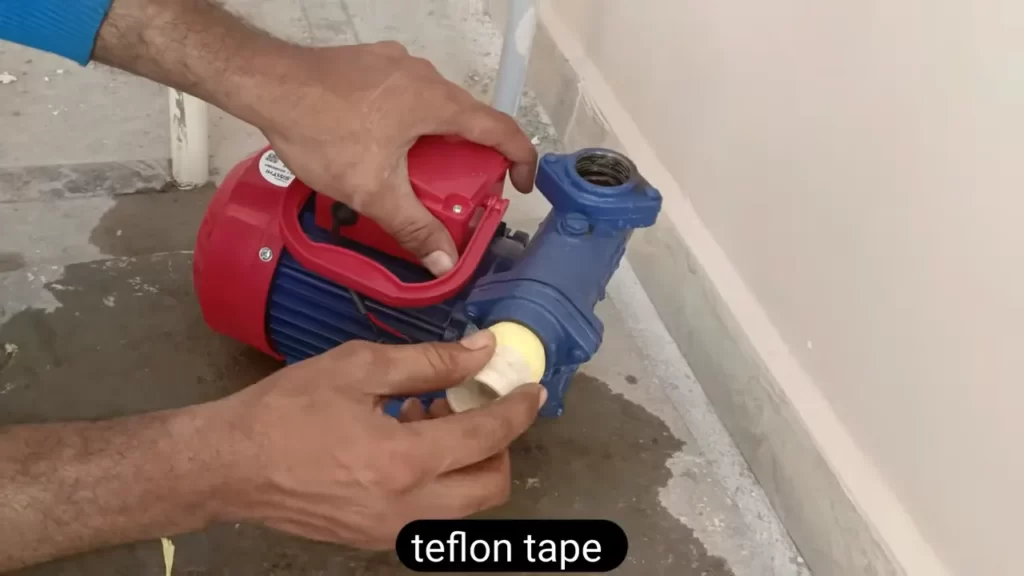
Preparing For The Installation
When it comes to installing a water pump in your house, proper preparation is key to ensuring a smooth and successful installation process. By taking the time to prepare beforehand, you can avoid unnecessary complications and setbacks. In this section, we will cover the pre-installation considerations, shutting off the main water supply, draining the existing water system, and the optional step of removing the old water pump.
Pre-installation Considerations
Before diving into the installation process, there are a few important considerations to keep in mind. These will help you plan and gather the necessary tools and materials:
- Ascertain the functionality of your current water pump. If it is not working optimally or if you are upgrading to a more efficient model, removing the old pump might be necessary.
- Choose an appropriate location for your new water pump. It should be easily accessible, well-ventilated, and away from excessive noise and vibration.
- Measure the space available in the designated location to ensure the new pump will fit properly.
- Research and purchase the right type and size of pump for your household needs. Consider factors such as water demand, pressure requirements, and power supply compatibility.
- Collect all the necessary tools and materials, which may include wrenches, pliers, pipe cutters, PVC pipes, fittings, and Teflon tape.
Shutting off the Main Water Supply
Before starting any work on your water pump installation, it is crucial to shut off the main water supply to avoid any water damage or accidents. Follow these steps to shut off the water:
- Locate the main water shut-off valve. It is typically found near the water meter or where the main water line enters your property.
- Turn the valve clockwise to close it completely, shutting off the water supply to the entire house.
- Verify that the water is no longer flowing by opening a faucet in your home. If water continues to flow, try closing any additional shut-off valves until the supply is completely cut off.
Draining the Existing Water System
To prepare for the installation of your new water pump, it is important to drain the existing water system. This will prevent any water from spilling out when disconnecting pipes and fittings. Follow these steps to drain the system:
- Start by opening all faucets, showerheads, and other water outlets in your house. This will allow the water to drain more easily.
- Locate the lowest point in your plumbing system, such as a basement faucet or an outdoor spigot.
- Attach a garden hose to the spigot and direct the other end to an outdoor area or a drainage system.
- Open the spigot, allowing the water to flow out and gradually drain the system.
- Once the water has stopped flowing, close the spigot and all the previously opened faucets.
Removing the Old Water Pump (Optional)
If you are replacing an existing water pump, it is important to remove the old one carefully. This step is optional if you are installing a pump for the first time. Follow these steps to remove the old water pump:
- Ensure that the main water supply is shut off and the system is drained.
- Disconnect any electrical connections to the old pump by turning off the power supply and removing any wires or cables.
- Using the appropriate tools, loosen and remove the fittings and pipes connected to the old pump.
- Carefully detach the old pump from its mounting brackets or straps, taking note of its position and orientation.
By following these preliminary steps in preparing for the installation of a water pump in your house, you are setting the stage for a successful and efficient installation process. Now that you have shut off the main water supply, drained the existing system, and optionally removed the old water pump, you are ready to proceed with the installation itself.
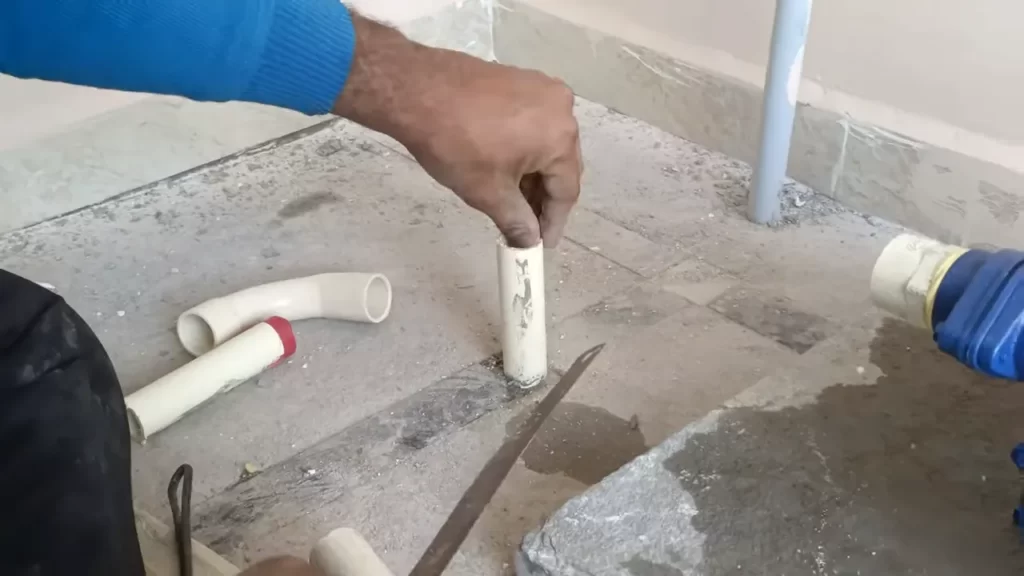
Installing The Water Pump
Installing the water pump is an essential step in setting up a well-functioning water system in your house. Whether you’re replacing an old pump or installing a new one, following a step-by-step installation process will ensure that it is done correctly. In this article, we will guide you through the key steps involved in installing a water pump, including properly positioning the pump, connecting it to the water source, securing it in place, and attaching the necessary fittings and pipes.
Step-by-step installation process
Installing a water pump requires a systematic approach to ensure successful installation. Follow these detailed steps to install your water pump:
- Begin by locating the ideal spot for the water pump. It should be positioned in a dry and well-ventilated area, away from direct sunlight and any potential water leaks.
- Once you have identified the right location, place the water pump on a stable surface, such as a concrete pad or sturdy foundation. This will prevent vibrations and reduce noise during operation.
- Next, check the manufacturer’s instructions for any specific requirements regarding the orientation of the water pump. Ensure that the pump is positioned in the correct direction, as indicated by the arrows on the pump body.
- After ensuring the proper orientation, secure the pump in place using bolts or brackets according to the manufacturer’s instructions. This will prevent the pump from moving or shifting during operation.
- Connect the water pump to the water source, whether it is a well, a water supply line, or a storage tank. Use the appropriate connectors and fittings recommended by the manufacturer.
- Ensure that all connections are tight and leak-free. Leaks can result in inefficiency and damage to your water pump system.
- Finally, turn on the water supply and check for any leaks or irregularities. Monitor the pump’s operation and observe any unusual noises or vibrations.
Properly positioning the water pump
Positioning the water pump correctly is crucial for its efficient operation and longevity. Consider the following steps to position your water pump properly:
- Choose a dry, well-ventilated area with enough space for the water pump.
- Avoid placing the pump under direct sunlight or near potential water leaks.
- Use a stable surface, like a concrete pad or sturdy foundation, to minimize vibrations and noise.
- Refer to the manufacturer’s instructions to ensure the pump is oriented in the correct direction.
Connecting the pump to the water source
Connecting your water pump to the water source is an essential step in the installation process. Follow these steps to connect your pump:
- Identify the water source, such as a well, a water supply line, or a storage tank.
- Refer to the manufacturer’s instructions to determine the recommended connectors and fittings for your specific water pump model.
- Securely attach the connectors and fittings to the pump and the water source, ensuring all connections are tight.
- Check for any leaks or drips around the connections, and fix them immediately to prevent future issues.
Securing the pump in place
Securing the water pump in place is crucial to prevent movement during operation. Follow these steps to secure the pump:
- Refer to the manufacturer’s instructions for the recommended method of securing the pump.
- Use bolts, brackets, or other designated hardware to secure the pump to the designated surface.
- Ensure that the pump is tightly fastened and stable.
Attaching the necessary fittings and pipes
Attaching the necessary fittings and pipes will complete the installation of your water pump. Follow these steps:
- Gather the required fittings, pipes, and other components needed to connect the pump to the water system.
- Refer to the manufacturer’s instructions to identify the appropriate fittings and pipes for your specific pump model.
- Attach the fittings and pipes to the pump according to the instructions, ensuring a secure and leak-free connection.
- Test the connections for any leaks and fix them promptly.
By following these step-by-step instructions, you’ll be able to install your water pump efficiently and ensure a reliable water supply in your house. Remember to consult the manufacturer’s instructions for specific details about your pump model and seek professional assistance if needed.
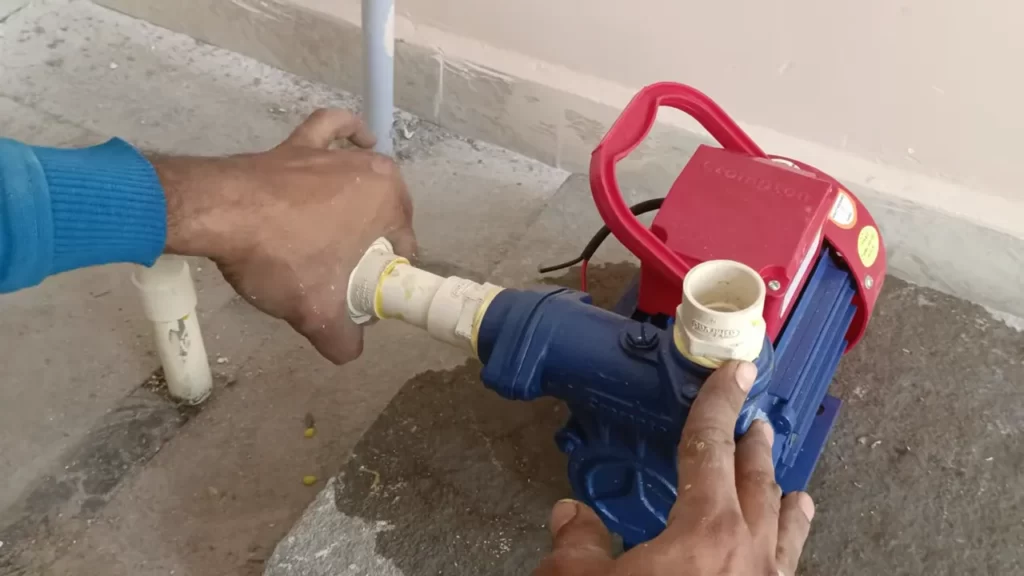
Testing And Troubleshooting
Once you have successfully installed a water pump in your house, it is crucial to perform testing and troubleshooting to ensure that the pump is working efficiently. By conducting thorough checks and addressing any issues that may arise, you can ensure the constant flow of water throughout your home. This section will guide you through the necessary steps to validate the functionality of your newly installed water pump.
Ensuring the water pump is working correctly
Begin by checking if the water pump is working correctly. Make sure the power supply is connected and the pump is receiving electricity. You can check this by examining the pump’s control panel and verifying that the power indicator is lit up. If the power indicator is off, check the circuit breaker to ensure that it hasn’t tripped. If the breaker has tripped, reset it and monitor the pump to ensure it remains operational.
Checking for leaks and addressing any issues
Next, inspect the water pump for any signs of leaks. Leaks can lead to a loss in water pressure and may cause damage to your property if left unaddressed. Carefully examine the connections and joints between the pump and the plumbing system. Look for any visible water drops or dampness around these areas. If you notice any leaks, tighten the connections or replace the faulty components to prevent further leakage.
If there are no visible leaks, it is still essential to check for any irregularities in water flow or pressure. Make sure that all faucets and fixtures in your house receive an adequate amount of water. A decrease in water pressure in certain areas might indicate a problem with the pump or the plumbing system. In such cases, consider consulting a professional plumber to diagnose and resolve the issue.
Conducting a pressure test
To ensure optimal performance of your water pump, it is recommended to conduct a pressure test. This test will assess the pressure at various points in your plumbing system and help identify any potential obstructions or restrictions. To conduct a pressure test, attach a pressure gauge to a designated faucet or faucet adapter and turn on the water pump. Measure the pressure and compare it to the recommended operating range specified by the pump’s manufacturer. If the pressure falls outside the acceptable range, further investigation may be required to identify and resolve the underlying cause.
Troubleshooting common problems
Even with proper installation and maintenance, water pumps can encounter common problems over time. By familiarizing yourself with these issues, you can be prepared to troubleshoot and address them promptly. Here are some common problems to watch out for:
- Inconsistent water pressure
- Unusual noises coming from the pump
- Frequent cycling on and off
- Loss of prime
- Overheating of the pump
If you experience any of these issues, refer to the pump’s user manual or consult a professional for troubleshooting steps or necessary repairs. Regular maintenance and timely intervention can help prevent significant malfunctions and extend the lifespan of your water pump.
Maintenance And Care For The Water Pump
Tips for keeping the water pump in excellent condition
Maintaining and caring for your water pump is crucial to ensure its proper functioning and longevity. By following these simple tips, you can keep your water pump in excellent condition for years to come.
Regular cleaning and inspection
Regular cleaning and inspection of your water pump is essential to prevent any debris or sediment buildup that could hamper its performance. Here are the steps you should take:
- Switch off the power supply to the water pump.
- Remove the protective cover and carefully clean the external surface of the pump using a soft cloth and mild detergent.
- Inspect the pump for any signs of wear or damage, such as cracks or leaks. If you notice any issues, it’s crucial to address them promptly.
- Next, remove the pump housing and impeller to clean any debris, silt, or other contaminants that may have accumulated. Make sure to use a brush and clean water to gently clean both the housing and impeller.
- Inspect the impeller for any signs of damage, such as broken or worn-out blades. Replace the impeller if necessary.
- After cleaning and inspecting the pump, reassemble all the parts carefully and securely.
Replacing worn-out parts
Sometimes, certain parts of the water pump may become worn-out due to continuous use. It’s important to identify and replace these parts promptly to avoid any inconvenience. Here’s what you need to do:
- Switch off the power supply to the water pump.
- Inspect all the components of the pump, including the motor, bearings, seals, and gaskets, for signs of wear or damage.
- If you notice any worn-out or damaged parts, make a note of them and purchase appropriate replacements. Ensure that you buy high-quality parts from reliable manufacturers.
- Follow the manufacturer’s instructions carefully to remove the old parts and install the new ones correctly.
- After replacing the worn-out parts, test the water pump to ensure it is functioning efficiently.
Scheduling professional maintenance
In addition to the regular cleaning and inspection, scheduling professional maintenance for your water pump is highly recommended. Professional maintenance ensures that any underlying issues or potential problems are addressed before they become significant and costly. Here’s what you should do:
- Contact a qualified water pump technician or plumber to schedule regular maintenance appointments.
- During the maintenance visit, the technician will perform a comprehensive inspection of the entire system, including the pump, pipes, and connections.
- They will also clean and lubricate the necessary parts, check the pressure, and test the pump’s performance.
- Based on their assessment, the technician will provide recommendations for any repairs or replacements required.
- Ensure that you follow the technician’s advice and address any recommended repairs or replacements promptly.
By following these tips for maintenance and care, you can keep your water pump functioning optimally and enjoy a reliable water supply in your house.
Frequently Asked Questions
Can I Install A Water Pump Myself?
Yes, you can install a water pump yourself as long as you have the necessary knowledge and skills. However, it is important to follow proper installation guidelines and safety precautions to ensure a successful installation and to avoid any potential damage or accidents.
Where Should A Water Pump Be Installed?
The water pump should be installed in a location that is easily accessible and close to the water source. It should also be placed on a stable and level surface to prevent any vibrations or movement. Additionally, it is important to ensure that the pump is protected from extreme weather conditions and potential damage.
How Do You Hook Up A Water Pump To A Tank?
To hook up a water pump to a tank, connect one end of a hose to the pump’s outlet and the other end to the tank’s inlet. Make sure the hose connection is secure to prevent leaks. Turn on the pump to start pumping water into the tank.
How Do You Connect A Water Pump To Electricity?
To connect a water pump to electricity, follow these steps: 1. Locate the pump’s power cord. 2. Plug the cord into a nearby electrical outlet. 3. Ensure the outlet has a compatible voltage for the pump. 4. Confirm the pump is securely connected and powered on.
5. Regularly check for any issues or malfunctions.
Conclusion
Installing a water pump in your house is a crucial task that requires careful planning and execution. By following the step-by-step guide provided in this blog post, you can successfully install a water pump without any hassle. Remember to gather all the necessary tools, shut off the power supply, and carefully connect the pipes.
With proper maintenance and regular checks, your water pump will function efficiently, ensuring a steady supply of water for all your household needs. Happy pumping!
